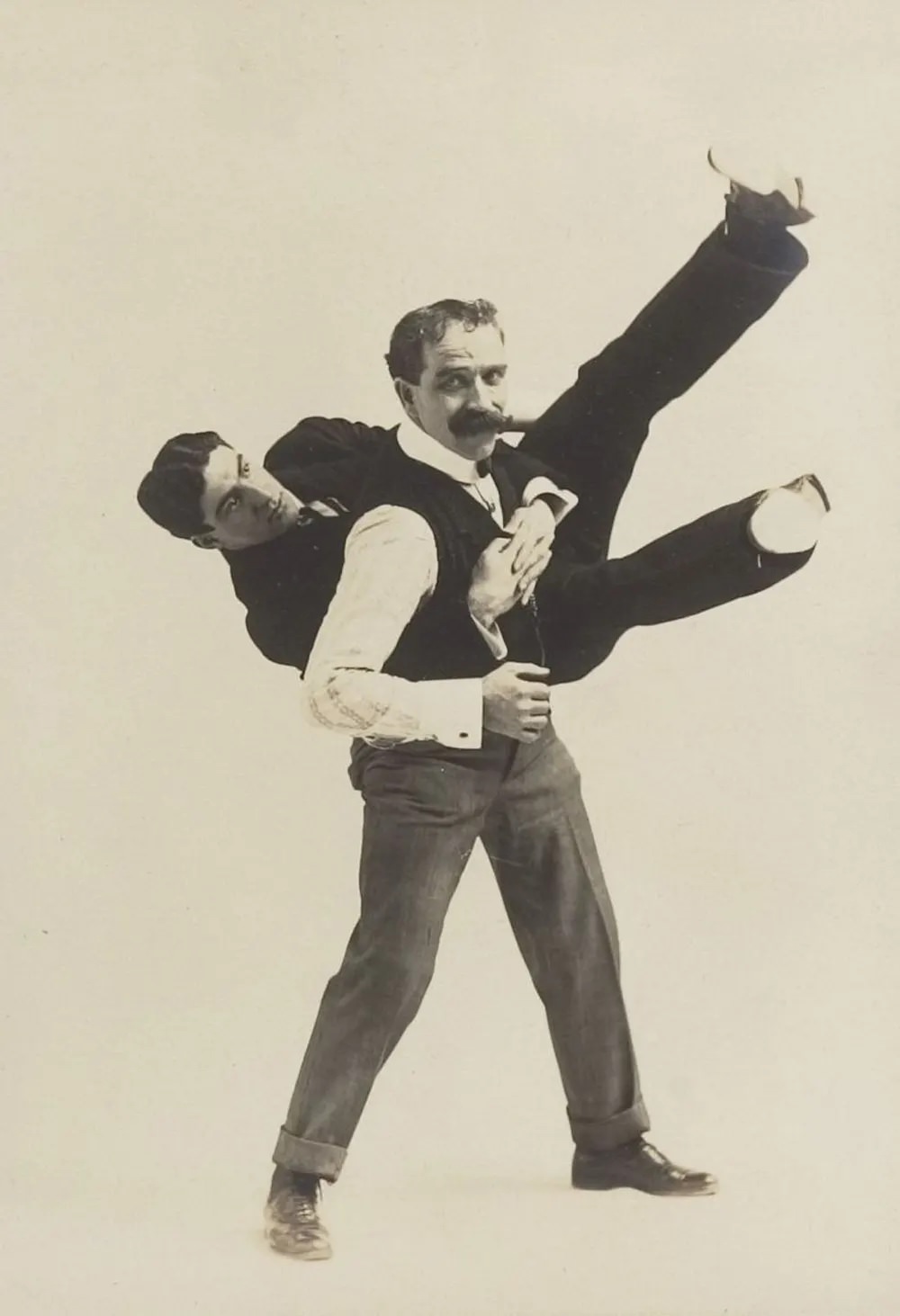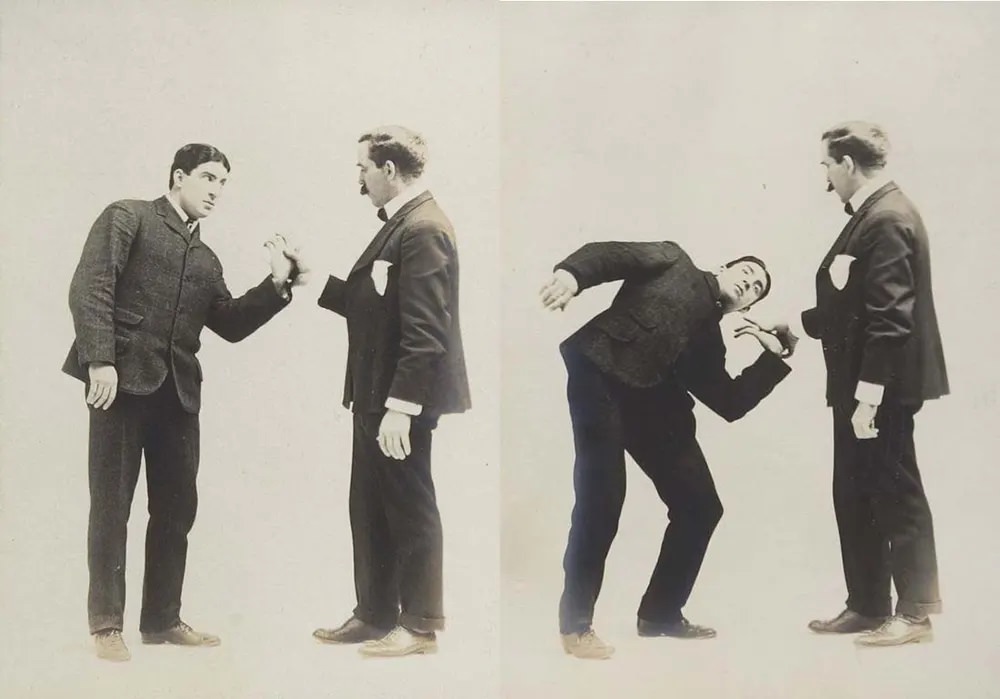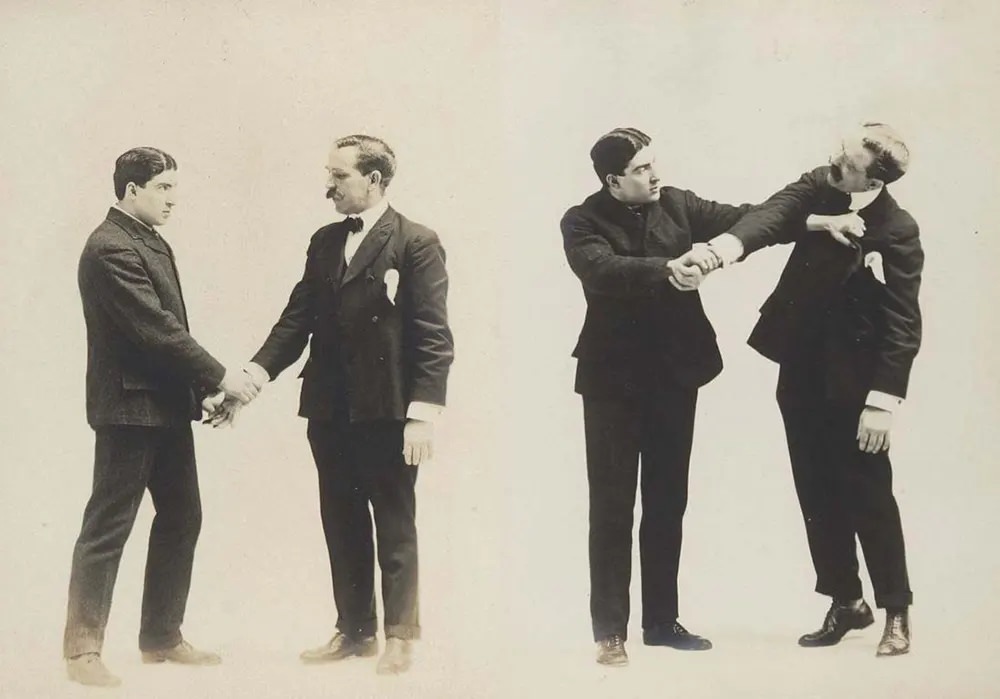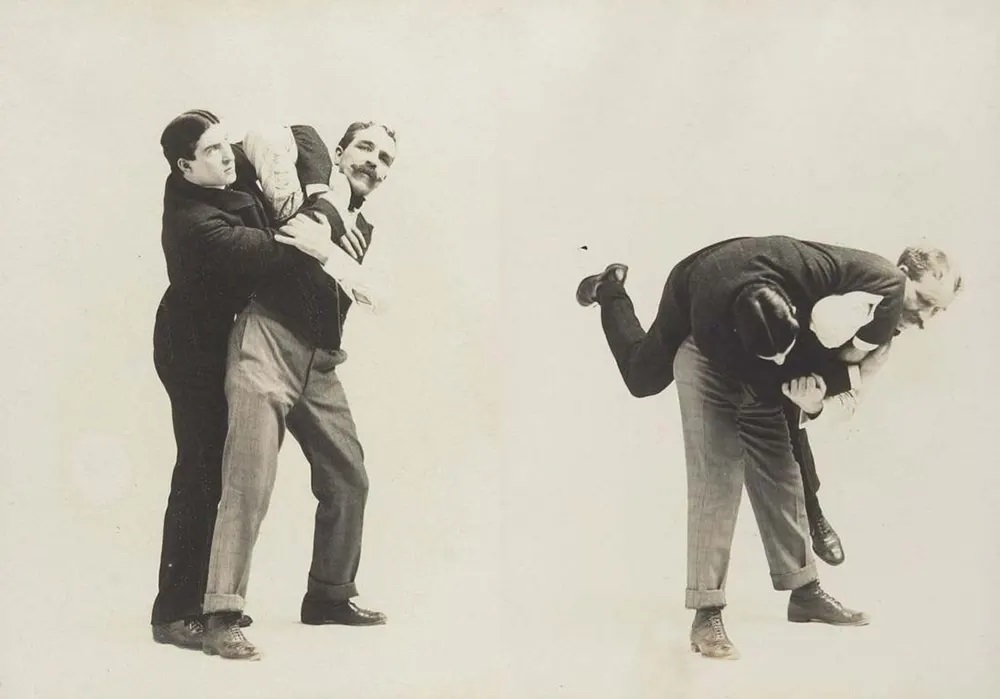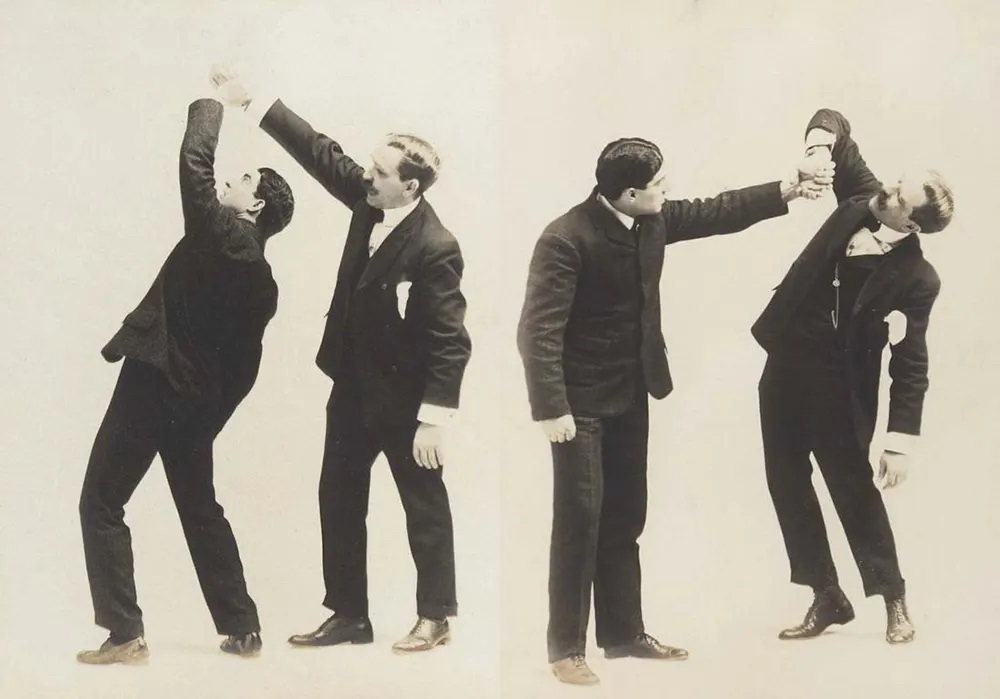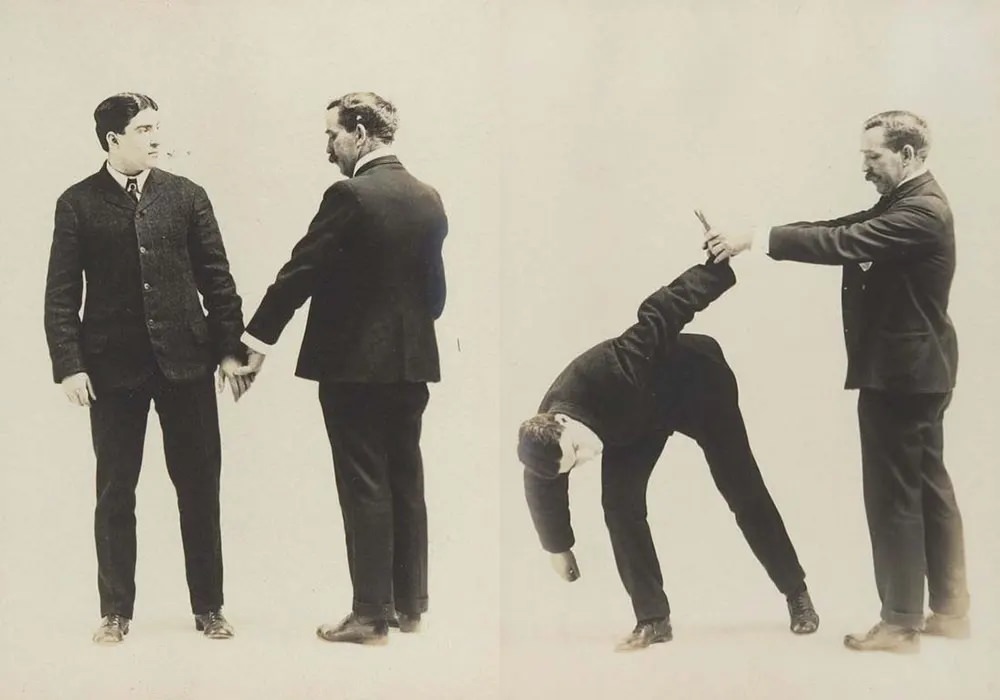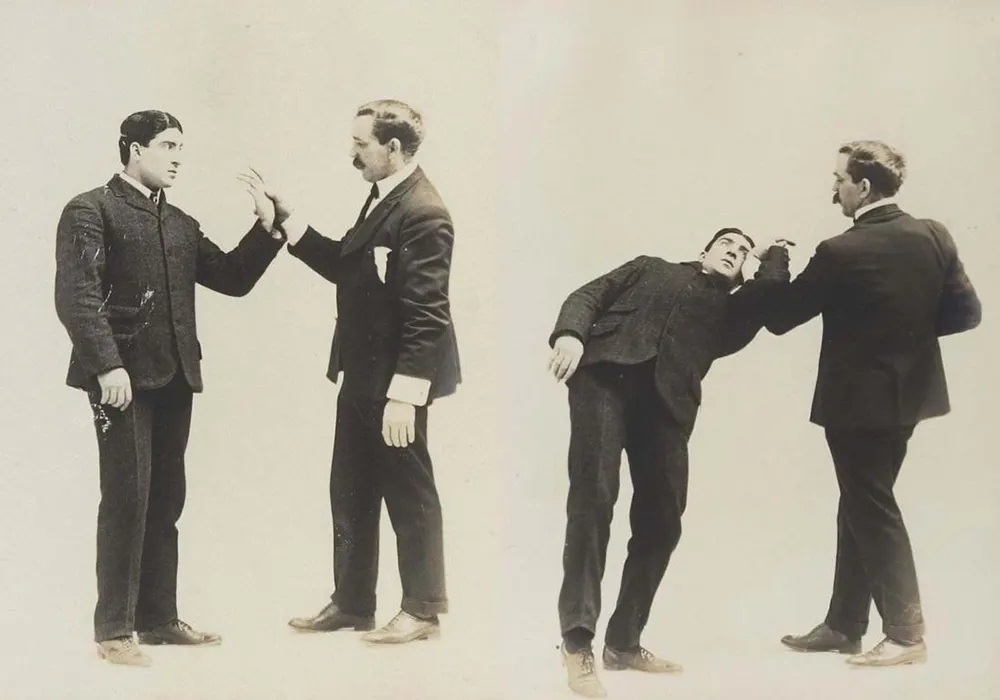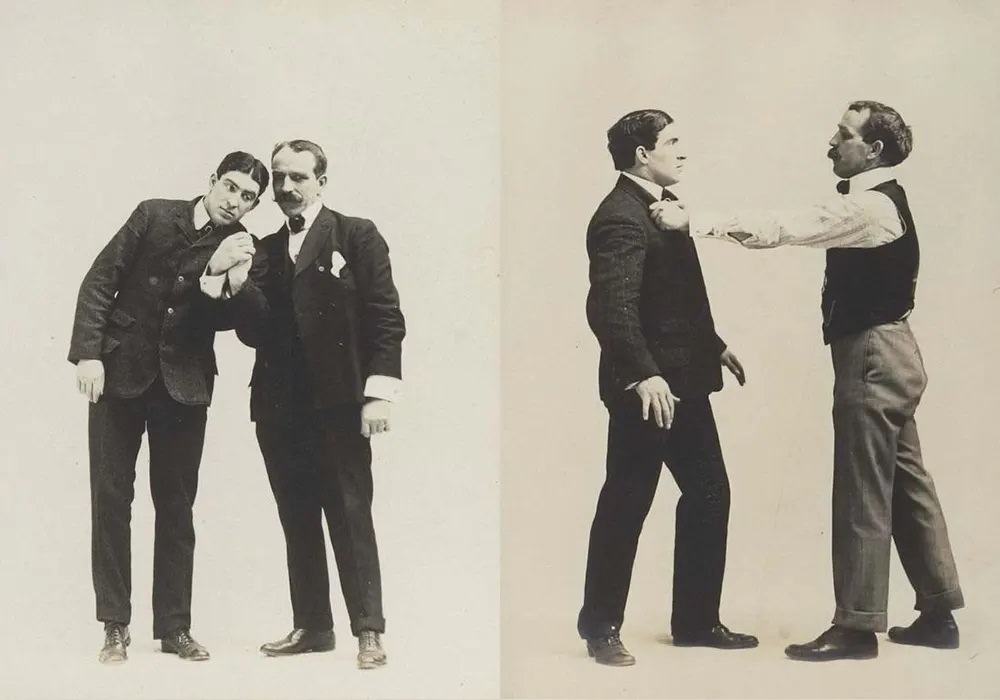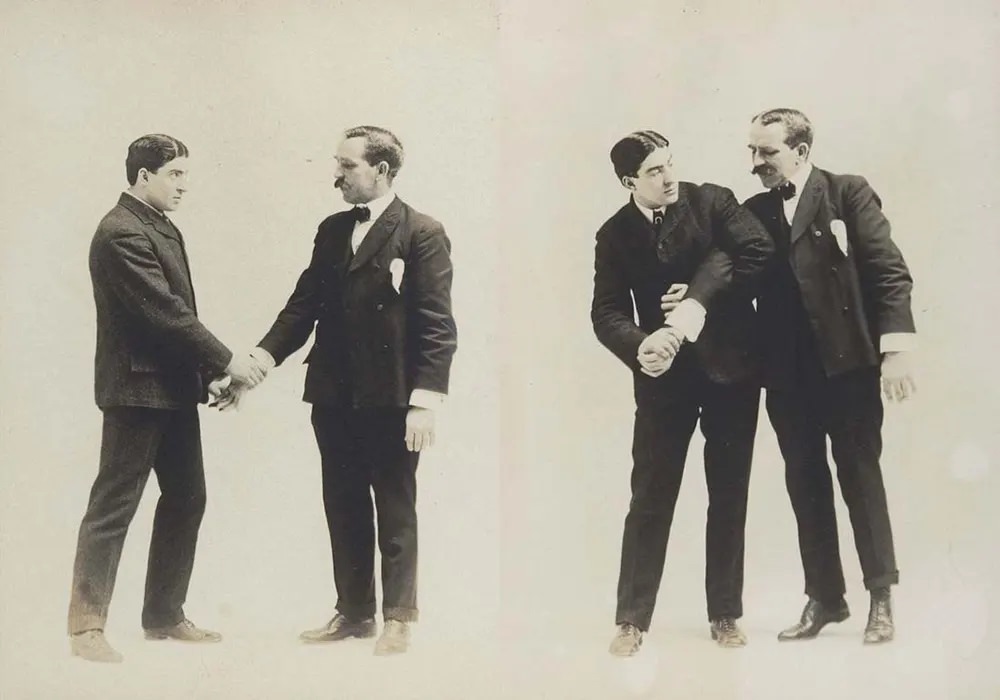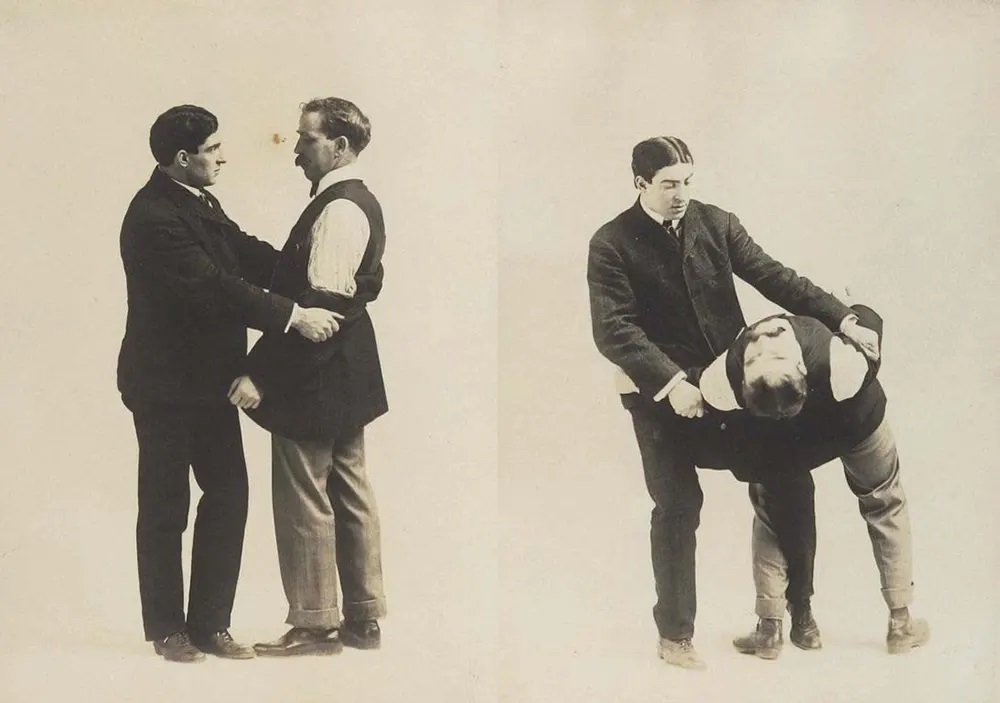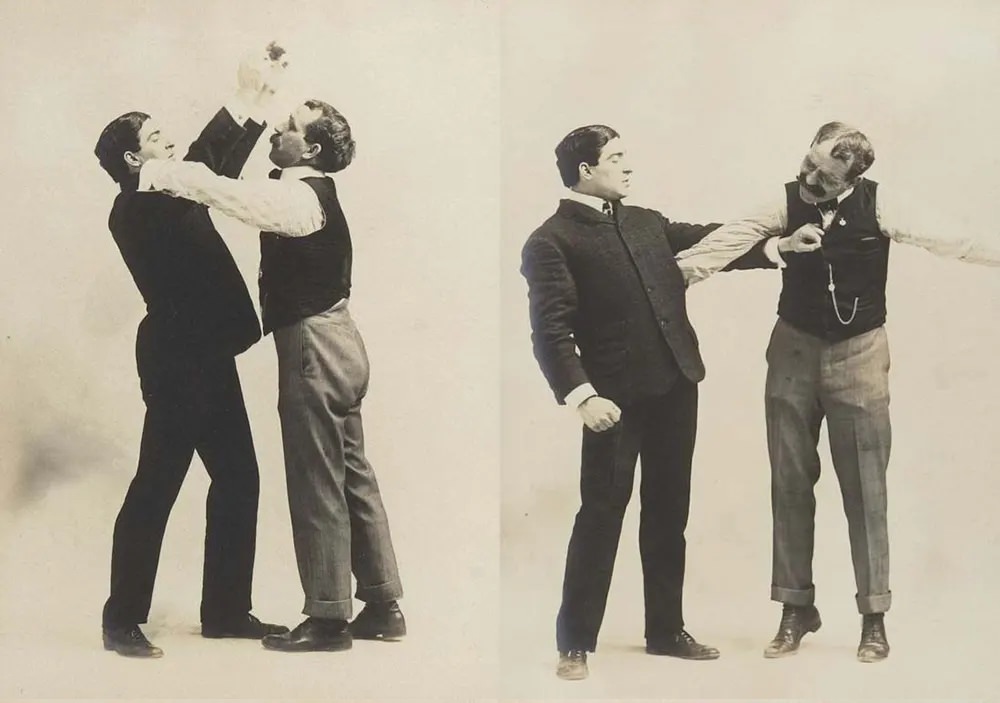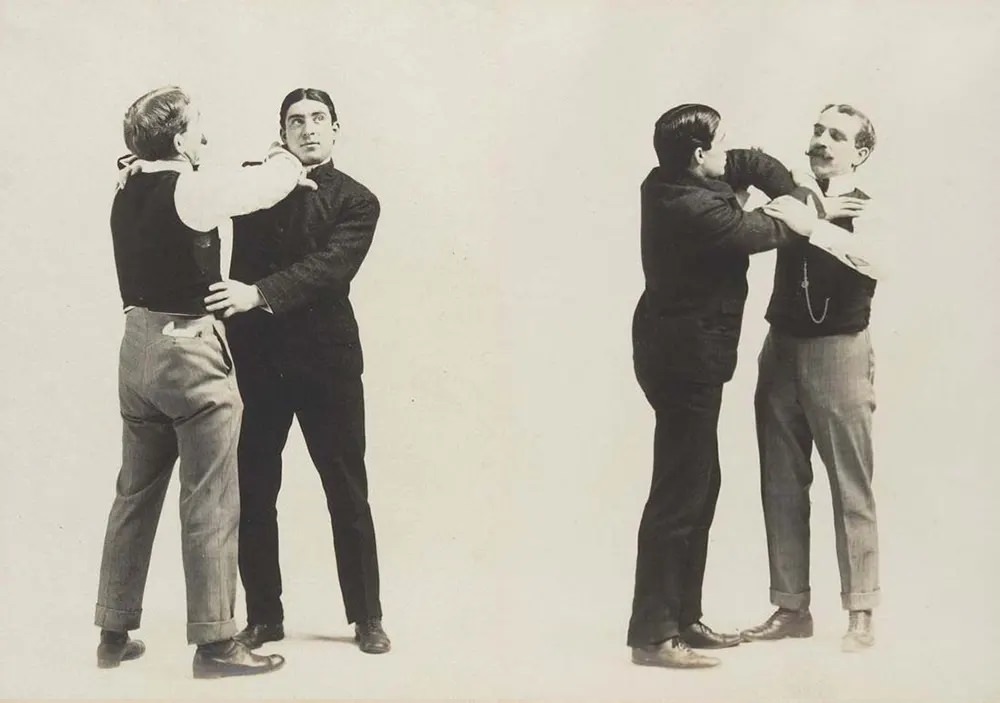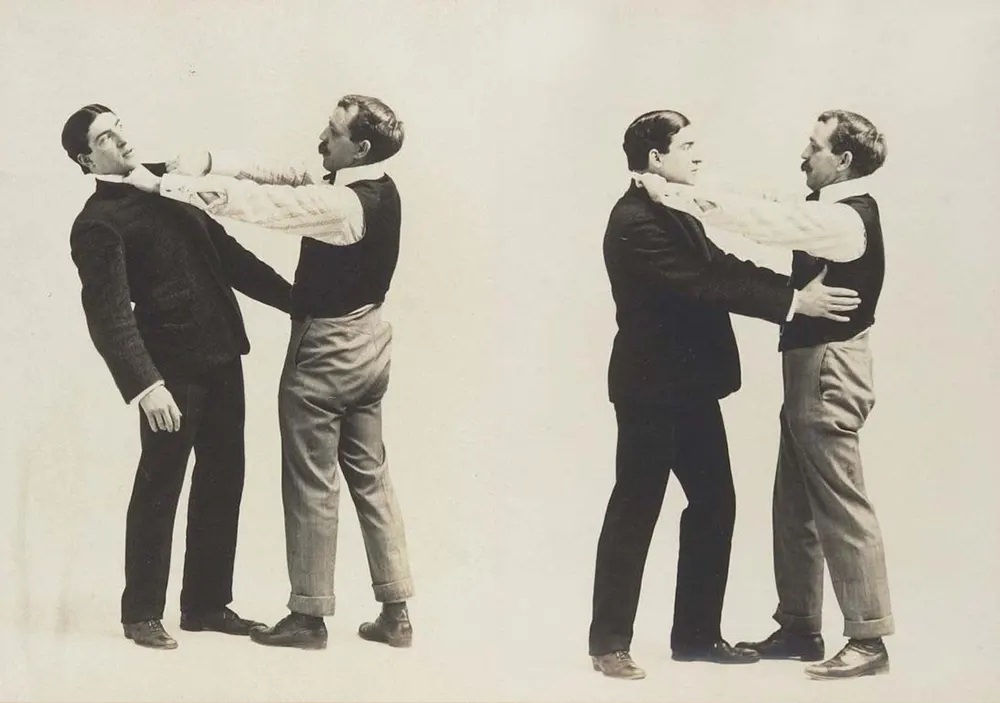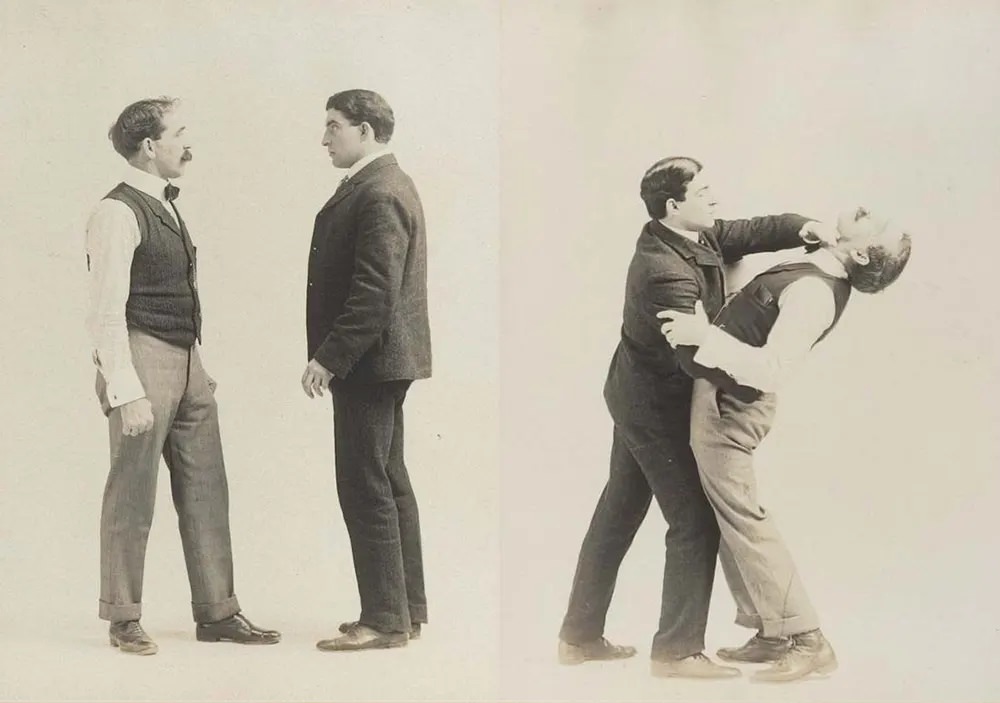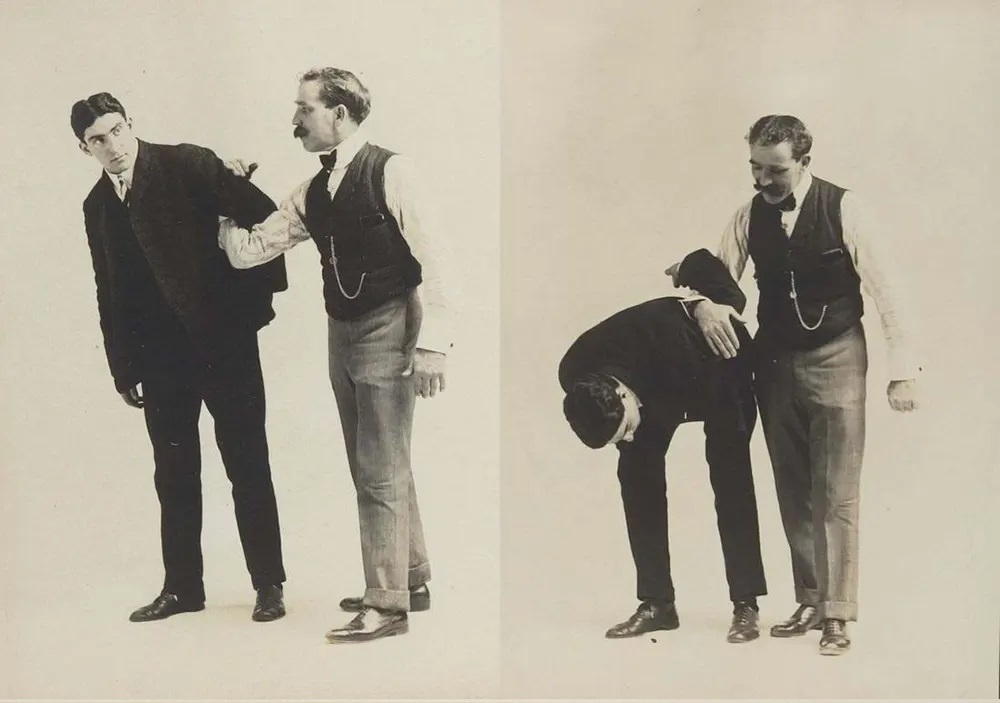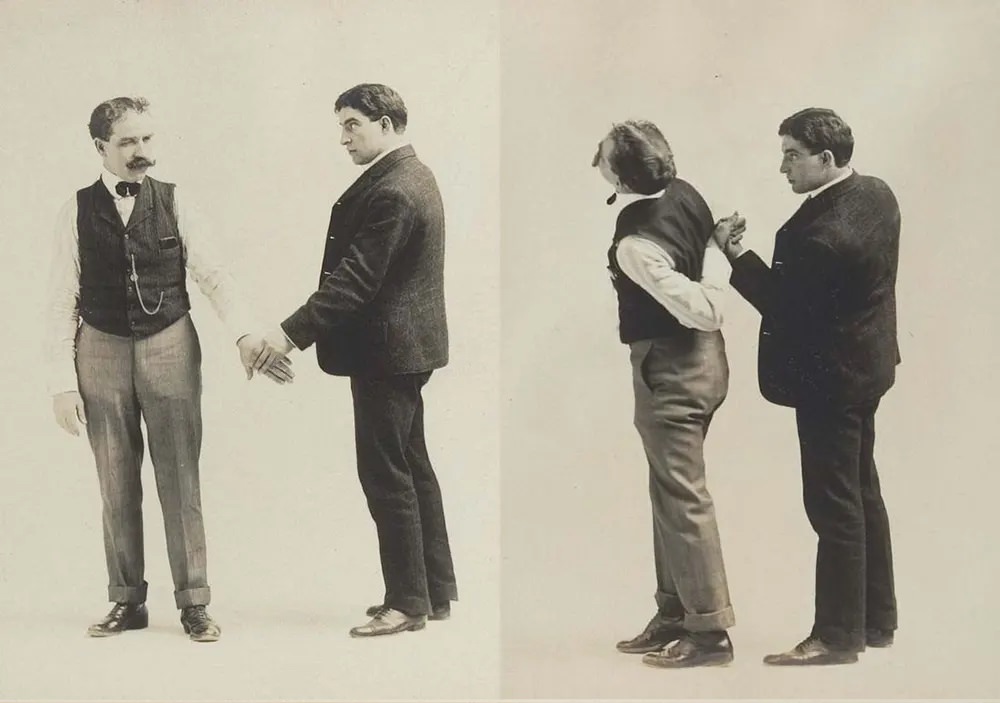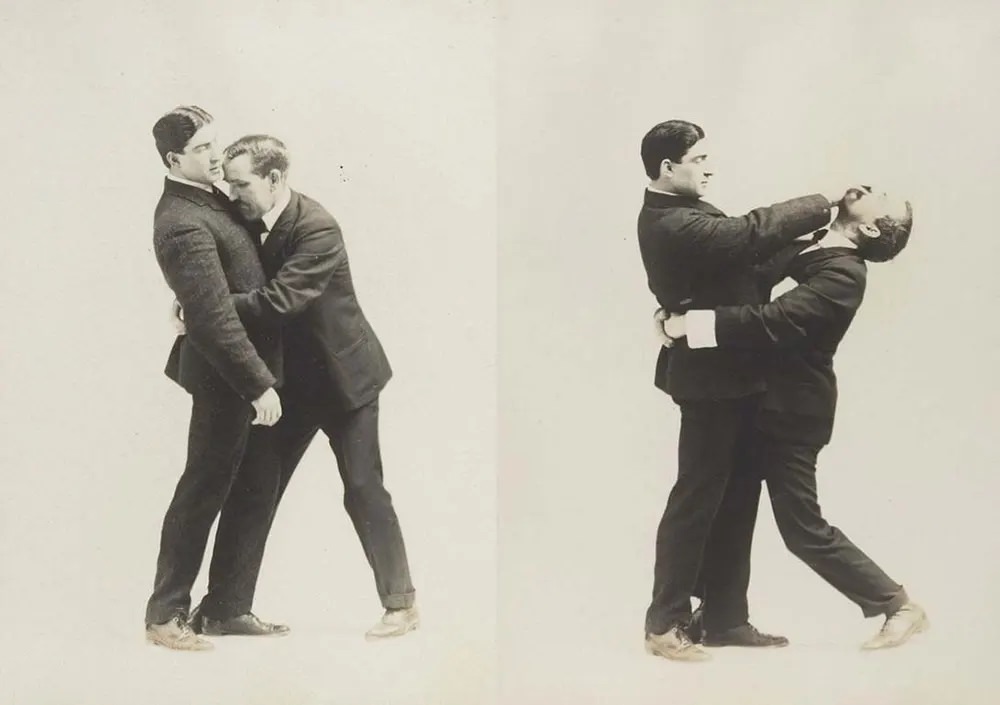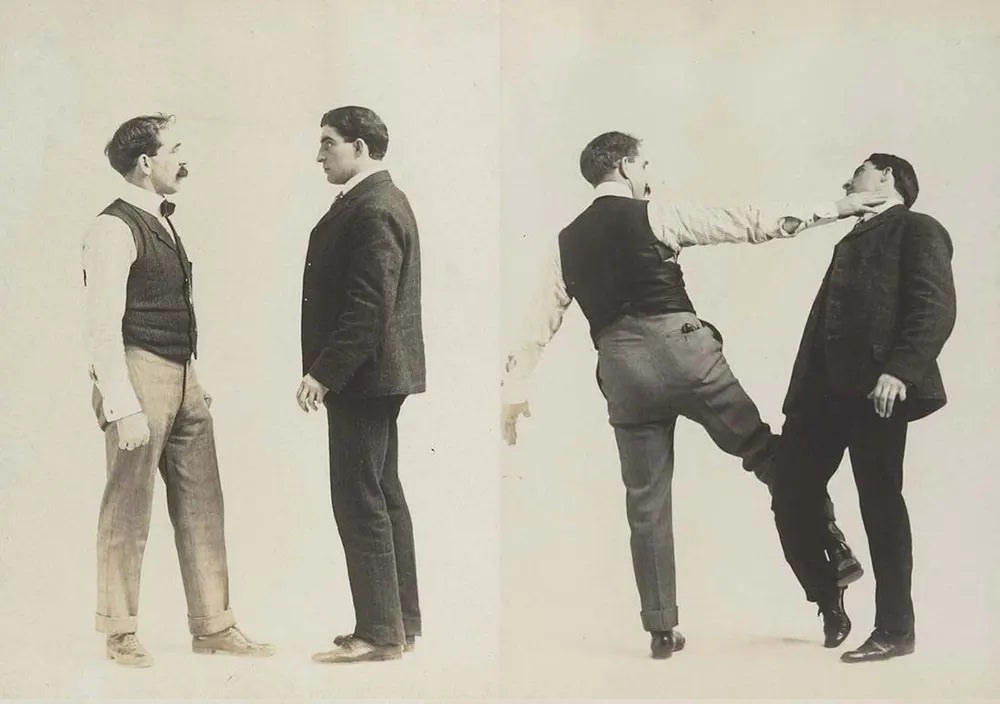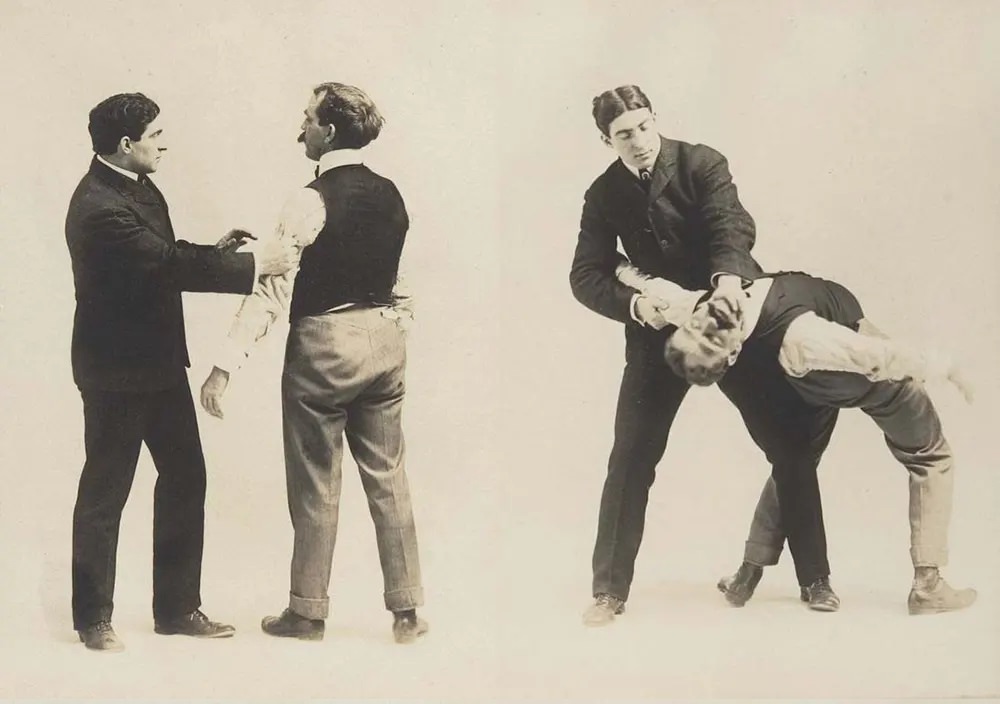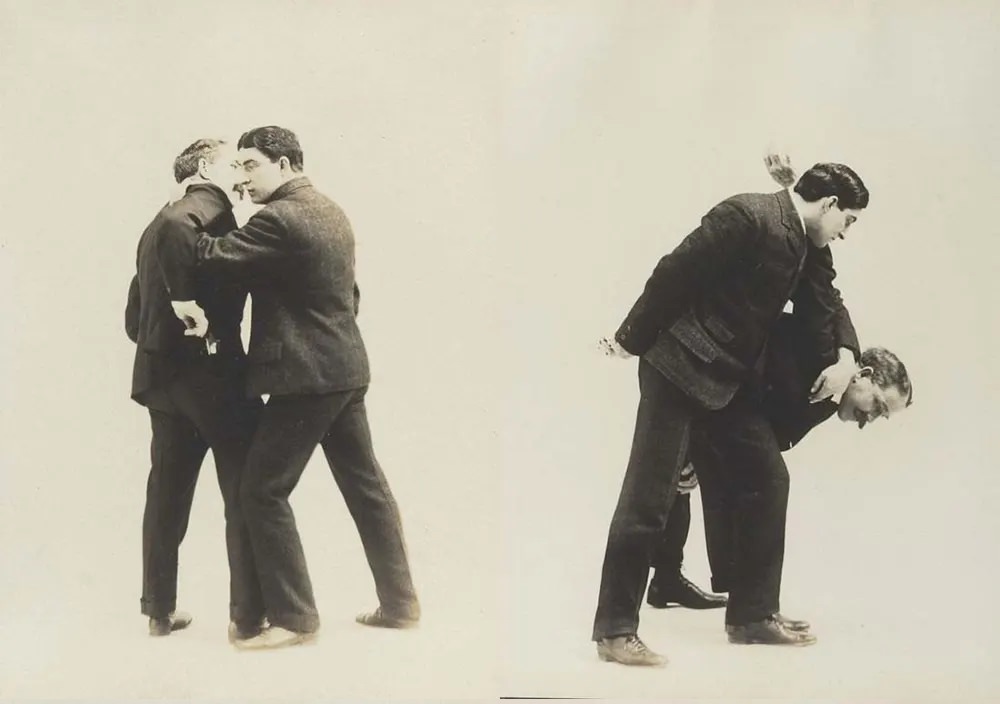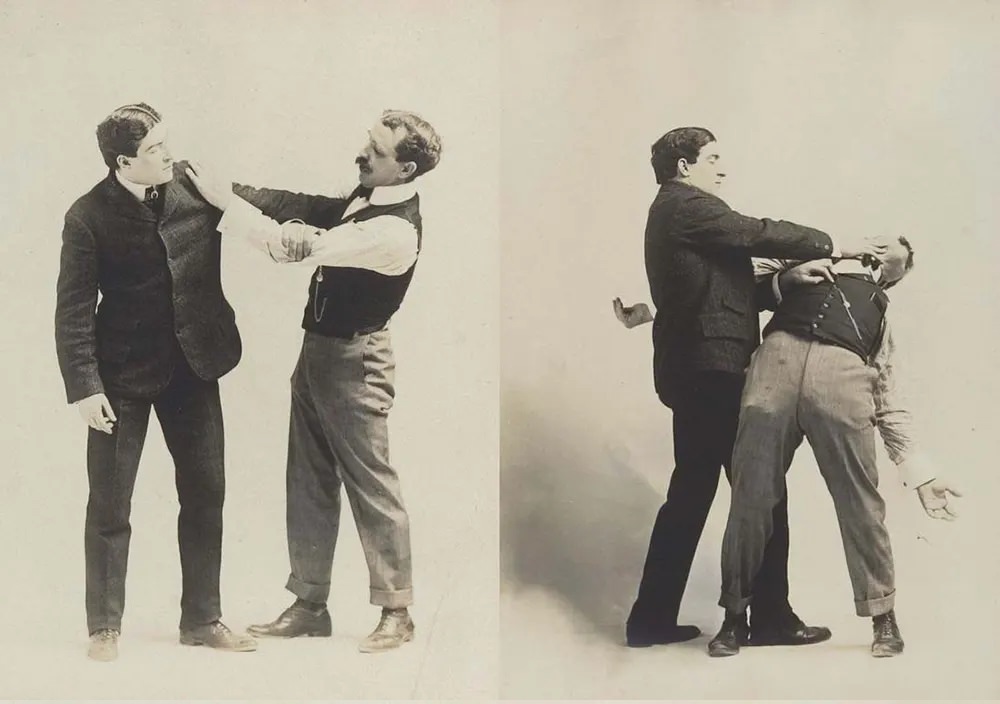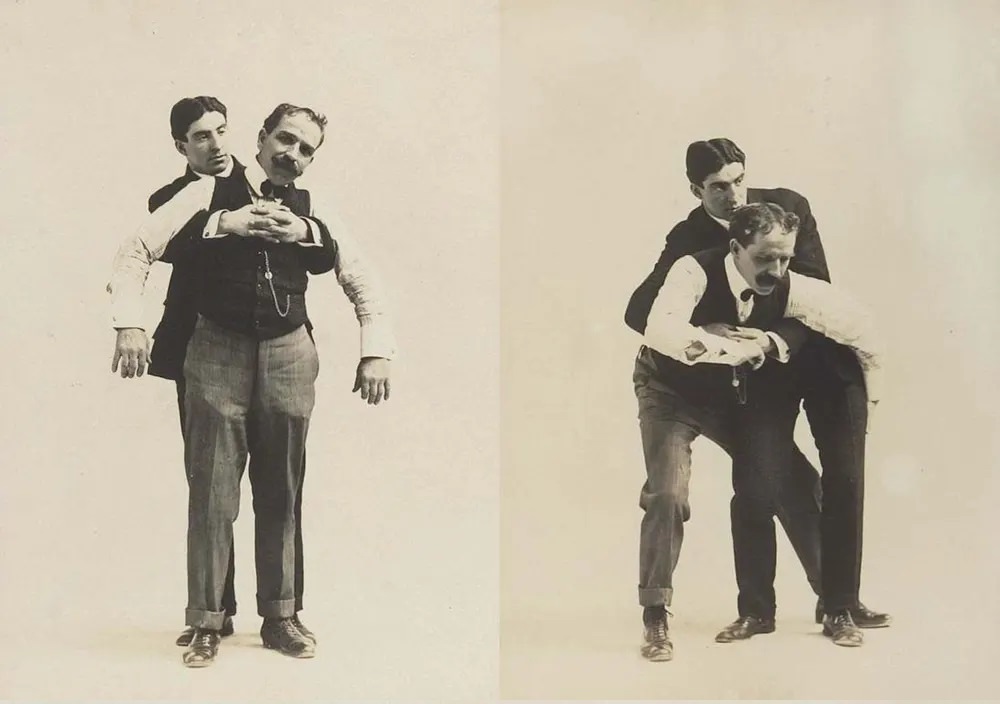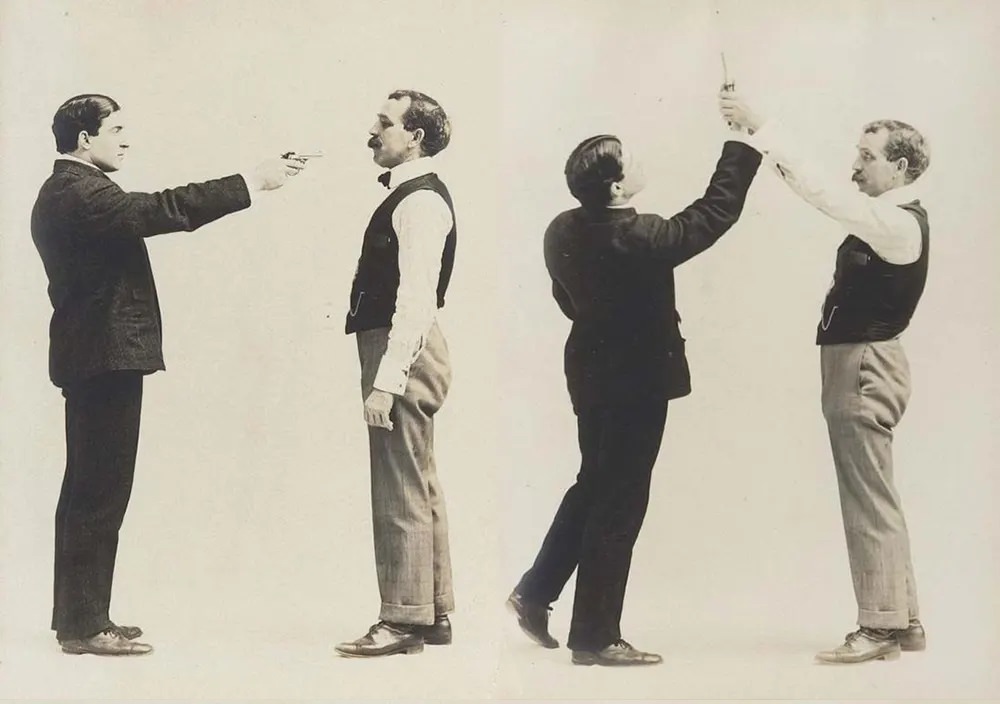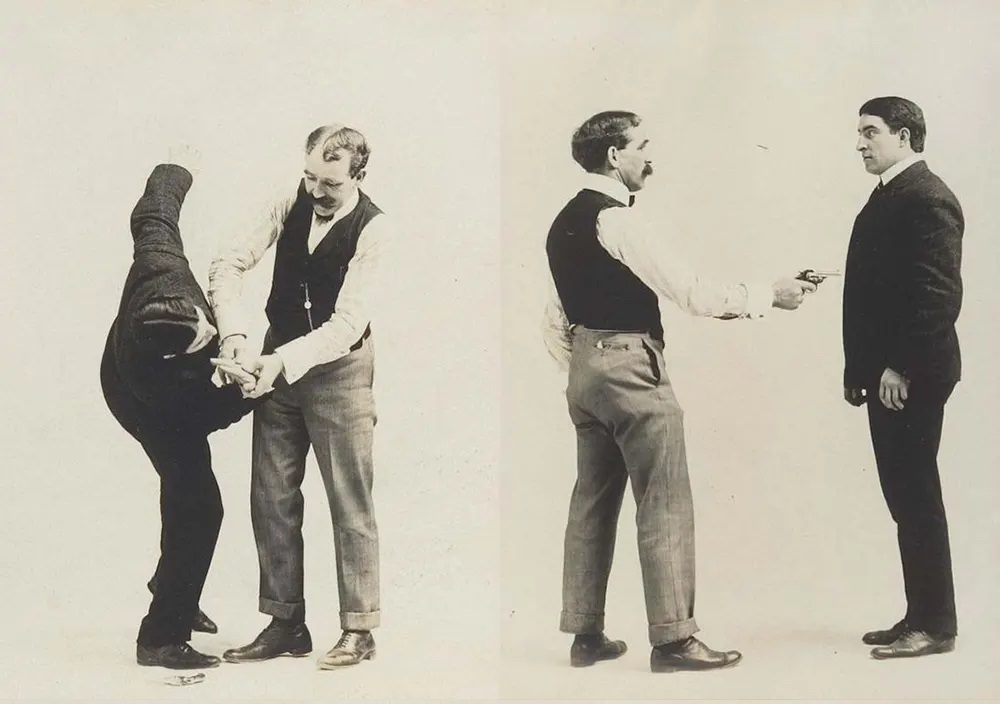Various self-defense hand-to-hand maneuvers are recorded in these historical photographs from an untitled album from the 1890s. The two finely dressed gentlemen demonstrate a variety of defensive moves that involve chokeholds, body slams, kicks, chops, and arm twists. Each image depicts a confrontation between two glowering men followed by the right move, but what they are doing is bizarre, obscure, and improbable. Each style has its unique features, but a common characteristic is the systemization of fighting techniques. This album contains an excellent example of a late Victorian instructional handbook, created during a time when photography was widely used as a pedagogical tool.
Historically, self-defense has existed since the dawn of time. Even the earliest humans had to learn how to defend themselves and teach others how to do it. Martial arts are delineated and disciplined forms of self-defense that evolved from less primitive forms of defense. The purpose of martial arts, in general, is to defeat a person physically or to defend oneself from physical danger. Other martial arts have their own spiritual/non-spiritual code of honor, such as Buddhism, Daoism, or Shinto. East Asian cultures are commonly associated with martial arts, but they are not unique to Asia. Several organizations are working to re-establish a system of combat martial arts that existed throughout Europe until modern times, commonly referred to as Historical European Martial Arts. At the same time, Savate is a French kick style developed by sailors and street fighters. The American Indians have a tradition of open-handed martial arts, including wrestling, and the Hawaiians have historically practiced arts involving small and large joint manipulations. A mixture of origins is found in the athletic movements of Capoeira, which were created in Brazil by enslaved people using skills brought to their homeland from Africa.


